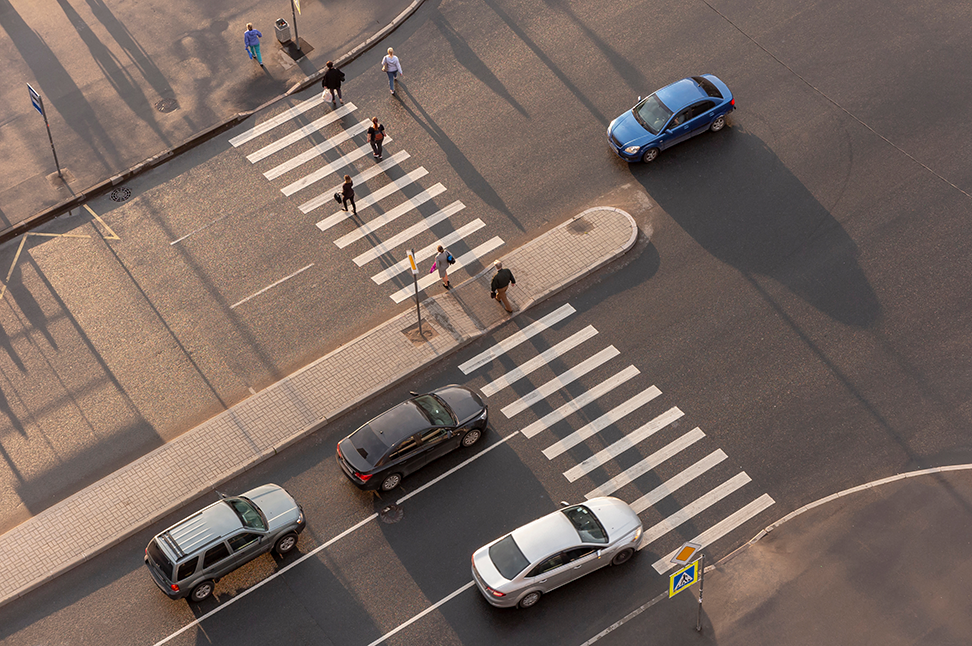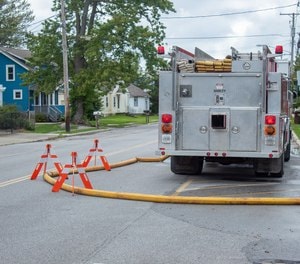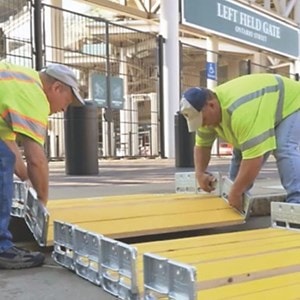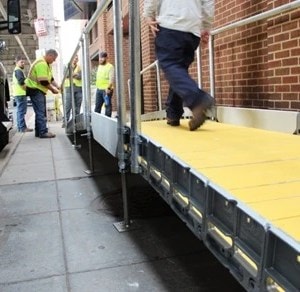PEDESTRIAN SAFETY

Serious injuries and deaths continue to surge in America’s urban work zones and are particularly dangerous for people with disabilities. The study from the National Safety Council found that, as of 2017, the lifetime odds of an individual dying from a pedestrian accident are 1 in 556. This puts pedestrian accidents behind heart disease, cancer, chronic lower respiratory disease, suicide, opioid overdose, motor vehicle crashes, falls, and gun assaults.
The Americans with Disabilities Act (ADA) was signed into law thirty-two years ago to put infrastructure owners and operators on notice that work zones will need to evolve to become more accessible to the vulnerable road user.
Many national associations and federal offices have observed some alarming trends in pedestrian fatalities and serious injuries.
The Governors Highway Safety Association’s (GHSA) annual spotlight report, Pedestrian Traffic Fatalities by State: 2021 Preliminary Data, offers the a comprehensive look at state and national trends in pedestrian deaths for 2021. The report projects that drivers struck and killed 7,485 people walking in 2021 – the most in a single year in four decades. The report examines key trends affecting this rise in pedestrian deaths, including increased reckless driving behaviors, the need for safer road crossings, and the continued uptick in sales of sport utility vehicles (SUVs), which cause more severe pedestrian impacts in the event of a collision.
NHTSA estimates that 76,000 pedestrians were injured nationwide in 2019 (the latest year statistics were available). In 2011, the AAA Foundation for Traffic Safety published a report on impact speeds and found “Results show that the average risk of severe injury for a pedestrian struck by a vehicle reaches 10% at an impact speed of 16 mph, 25% at 23 mph, 50% at 31 mph, 75% at 39 mph, and 90% at 46 mph.” The average risk of death for a pedestrian reaches 10% at an impact speed of 23 mph, 25% at 32 mph, 50% at 42 mph, 75% at 50 mph, and 90% at 58 mph.”

The Federal Highway Administration (FHWA) has published standards and guidance for designers, engineers and practitioners charged with creating work zones that accommodate all pedestrians, including those with disabilities. The Manual of Uniform Traffic Control Devices (MUTCD) provide clear directions as to what efforts must be undertaken to accommodate the disabled pedestrian in Temporary Traffic Control (TTC) zones. Section 6D.02 reads, “When existing pedestrian facilities are disrupted, closed, or relocated in a TTC zone, the temporary facilities shall be detectable and include accessibility features consistent with the features present in the existing pedestrian facility. Where pedestrians with visual disabilities normally use the closed sidewalk, a barrier that is detectable by a person with a visual disability traveling with the aid of a long cane shall be placed across the full width of the closed sidewalk.”
Currently, the MUTCD is moving towards the release of the 11th Edition, and a Final Rule is expected in Spring 2023. Based upon the tens of thousands of comments to the proposed revisions, the compliance with ADA requirements will likely be more definitive.
The process to rehabilitate public right-of-ways, such as sidewalks, must accommodate the needs of their customers, as communities transition to more walkable environments. The engineering and manufacturing industry heard the call from agencies and has developed innovative systems that are easily deployed and durable yet meet the ADA requirements for accessibility. Transportation agencies have applauded these advancements and have integrated them into their plans and specifications.
Industry and agencies are standing together to achieve the goal of Towards Zero and creating communities that accommodates the needs of all road users, including pedestrians with disabilities.
Related Articles
-
 The Traffic Safety Cone Has Been In Use For Decades – Here's How It Got Reinvented
The Traffic Safety Cone Has Been In Use For Decades – Here's How It Got Reinvented -
 4 Ways a Portable Pedestrian Ramp Makes the Community more Accessible
4 Ways a Portable Pedestrian Ramp Makes the Community more AccessibleEveryone wants a more accessible community. But the reality is that all communities have unique obstacles that create barriers for those who do not have the same mobility abilities as others. For exam...
-
 INNOVATIVE RAMP PROVIDES ACCESSIBILITY TO SIDEWALK OBSTRUCTION IN D.C. WORK ZONE
INNOVATIVE RAMP PROVIDES ACCESSIBILITY TO SIDEWALK OBSTRUCTION IN D.C. WORK ZONEA residential building in an area with heavy foot traffic needed maintenance, but the tools and machinery needed for the project created a tripping hazard. Closing the sidewalk was not an option so PS...